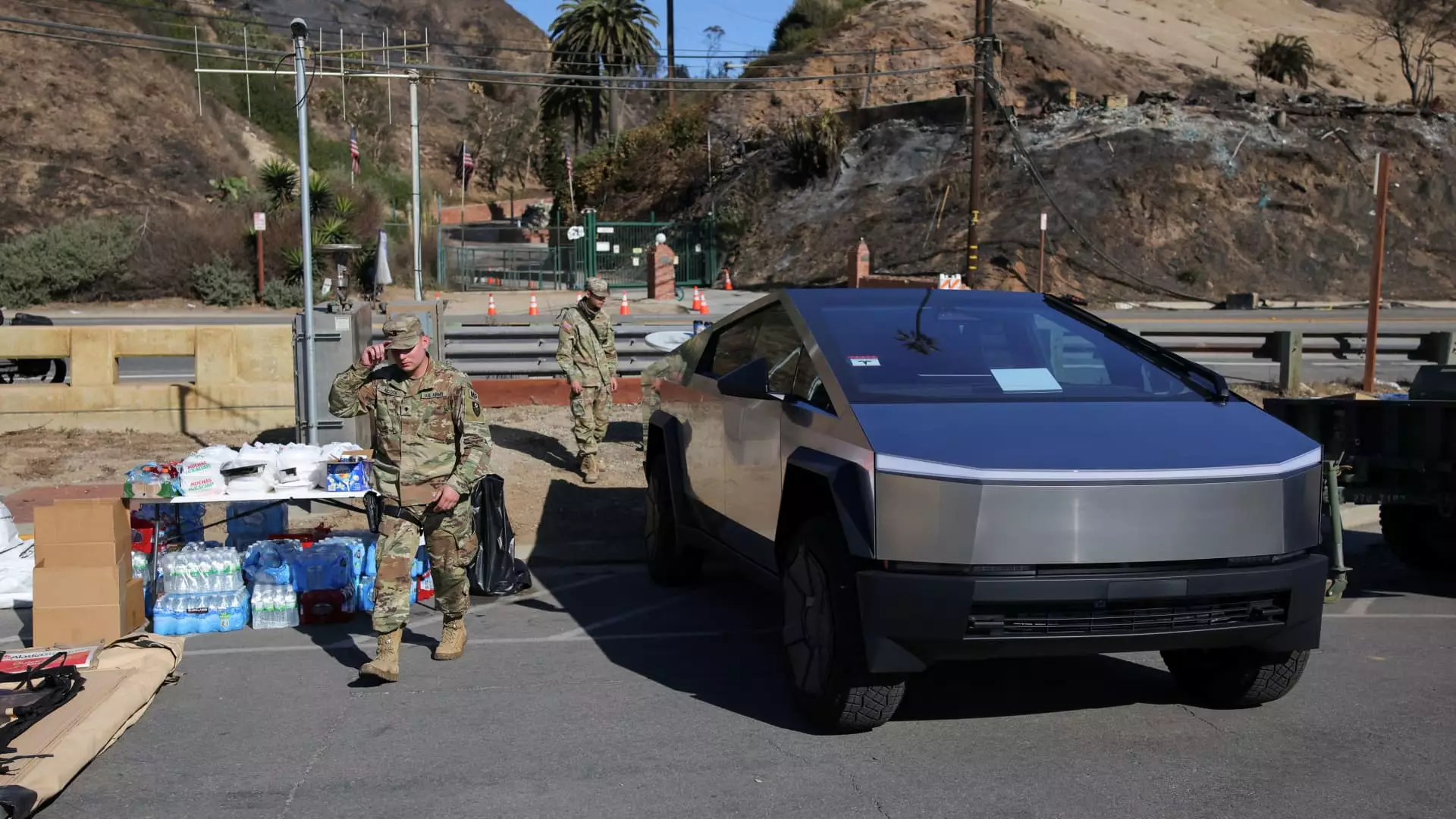Tesla has recently introduced discounts on its Cybertruck inventory, a strategic move reflecting both market dynamics and production realities. With price reductions reaching up to $1,600 on standard models and even higher for demo versions, it’s clear that Tesla is responding to the pressures of an increasingly competitive electric vehicle (EV) market. The company’s attempt to make the Cybertruck more attractive comes at a time when its production lines in Austin, Texas, have reportedly slowed, raising questions about ongoing demand and operational efficiency.
Despite boasting impressive sales figures, including outselling the Ford Lightning F-150 last year, the Cybertruck’s debut has not been without its challenges. Initially revealed by CEO Elon Musk in 2019 with an expected base price around $40,000, the reality in 2024 showed a much steeper entry price at approximately $80,000. This disparity may contribute to the stunted growth of the vehicle within Tesla’s portfolio, particularly as newer models enter the market.
Tesla’s broader production woes have cast shadows over the Cybertruck’s success. Complications, such as multiple recalls—most recently a sixth recall due to defective drive inverters—have created hurdles that impact consumer confidence. Furthermore, as EV sales overall surged, Tesla’s market share was diluted under the weight of fierce competition from other automakers, which made headway with their own all-electric vehicles.
The outlook for Tesla’s flagship Cybertruck must be examined against the backdrop of these competitive challenges and internal setbacks. In 2024, although the entire EV market in the United States grew by 7.3%, Tesla experienced a dip in sales of approximately 37,000 vehicles. The enduring popularity of the Model Y and Model 3 is noteworthy, yet even these staples of Tesla’s lineup have experienced declines from prior-year sales figures.
Musk’s apologies to California customers waiting for delayed Cybertruck deliveries serve as a reminder of the complexities involved in logistics and customer satisfaction. He cited the need to repurpose existing Cybertrucks to assist victims of recent wildfires, utilizing them as mobile power supply points. This illustrates both the utility of the vehicle in real-world scenarios and the ongoing challenges Tesla faces in balancing production and urgent delivery demands.
Tesla’s handling of the Cybertruck amidst the evolving landscape of electric vehicles reveals significant tensions between innovation and market response. While the latest price cuts attempt to regain momentum, the shadow of production issues and escalating competition looms large. Moving forward, Tesla must address these internal processes while also enhancing customer relationships and expectations. The road ahead is fraught with challenges, but if navigated effectively, the Cybertruck may still fulfill its promise as a cornerstone of Tesla’s future growth.

